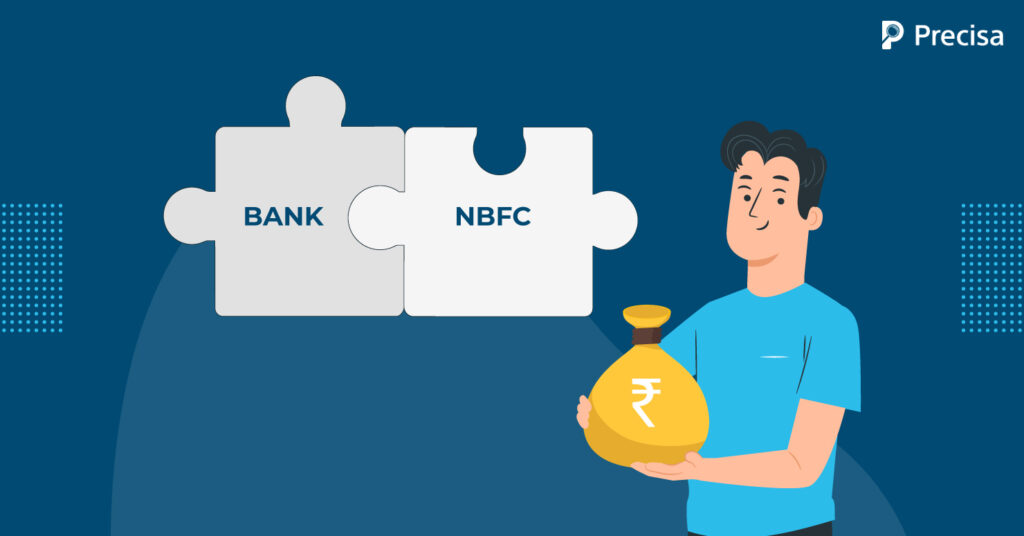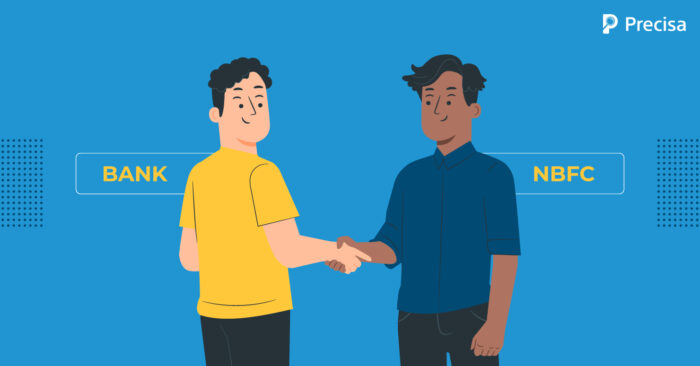Why Co-lending Will Undoubtedly Be the Future of Global Lending?

Financial assistance for promising businesses is critical to India’s objective of creating an entrepreneur-friendly economy. A vendor’s most significant hurdle to establishing business is financing. Did you know that 77% of working Indians are dependent on personal loans to stay afloat?
That is precisely where RBI-approved Co-lending came in as a blessing – to address the financial needs in urban and rural economies. Banks and NBFCs are looking more closely at the possibility of co-lending and its various dimensions.
In Nov 2020, the Reserve bank of India issued guidelines for easing the liquidity crisis of non-bank lenders. This will facilitate access to credit by productive and dynamic sectors of the economy. So, the chances are that co-lending is the future of global lending. How? Let’s explore that.
What is Co-Lending?
NBFCs and banks both take part in co-lending. They partner with each other to provide loans to their clients. All NBFCs are approved by the model, including housing finance companies (HFCs) that lend in conjunction with banks.
To put it briefly, banks can extend loans to NBFCs and HFCs. Those organisations then disburse funds to priority groups and individuals. As a result, banks leverage their balance sheets to house the bulk of the loans, while NBFCs and HFCs originate and collect the loans. This reflects the fact that NBFCs and HFCs can venture into different regions of the country than banks.
The borrowers sign loans with NBFCs, which act as single-point-of-contact for them. NBFCs and banks are both represented in the prescribed structure, about their roles, functions and responsibilities. Finally, borrowers agree to a reasonable, all-inclusive interest rate with the lenders.
More credit will be expended in priority sectors through this initiative, including the under-served and even the unserved. The combination of the NBFC’s more extensive reach and the bank’s low cost of funds facilitates this expansion.
What are the features of Co-lending?
- Determining the risk assessment method that suits the risk policies of the parties.
- Formulating repayment plans with ease.
- Adhering to the business policies of each partner.
- Streamlined data exchange between partners, including documents.
- Compliance with regulatory and reporting requirements.
- High resilience, security, and scalability.
- Providing real-time reporting and accounting.
Benefits of Co-lending
Rather than an overview of the many benefits co-lending holds, let us take a look at the benefits that work for each player involved in this model.
How does co-lending favour NBFCs?
With shared risk and returns, co-lending is a lifeline for NBFCs that are looking to improve their reputation and credibility.
- Trust:
As the lending market grows, young NBFC companies will have an easier time establishing trust with consumers due to co-lending deals with big banks.
- A lower interest rate:
As the most affordable source of financing in the economy, banks enjoy an advantageous position. In this way, NBFCs can offer less expensive loans than their competitors with co-lending arrangements.
- Reducing risk:
With the risk split between the banks and NBFCs and the former retaining most of their capital, NBFCs can cut their losses on defaults.
How does co-lending favour Banks?
Traditional banks had confined their lending services to a limited user group. But co-lending seems to disrupt these bounds.
- Confidence in customers:
Since NBFCs have to contribute at least 20% of their capital, banks are more confident in the clients they receive, and therefore, banks have less underwriting to do.
- Improved customer service:
Fintechs and NBFCs focus primarily on customer satisfaction. This means that the modern partner takes care of banking’s entire customer management with streamlined processes. The result is higher conversion rates and repeat business opportunities.
- Ability to reach more customers:
It is conventional for NBFCs to reach out to the country’s remotest regions, accessible target groups, and possess greater digital connectivity. Thus, banks can cater to an expanded range of potential customers and businesses.
- Risk management:
With the risk shared by both parties, banks are provided with additional security and can minimise losses in the unlikely event of a mishap.
How does co-lending favour consumers?
Customers are at the centre of the bank’s and NBFC’s benefits. So, they are sure to get the best of both.
- Get better service:
Modern companies such as fintechs ensure their customers have a smooth experience throughout their deals. That is an advantage for a customer seeking less trouble and more robust financial solutions or products.
- Appealing interest rates:
Now, better customer service is no longer the added baggage of a high interest rate. With banks being involved in this entire co-lending process, the interest rates levied on the customer are monitored, which are usually low or reasonable.
- Financial aid to all, including the unserved:
Traditional credit-deficient groups in rural areas and those with a limited credit history benefit from co-lending. With the new model, they now have access to bank lending products, although indirectly.
- Helping the customer achieve financial literacy:
In addition to providing personal service, NBFCs and fintechs strive to ensure that each customer is well-informed about the financial products and services. Thus, eliminating any ambiguity and making underserved customers more financially literate.
The Takeaway
Retail credit markets have always been attractive to financial service providers. Removing friction between banks and new-age lenders facilitates the expansion of credit. Co-lending bridges credit gaps and enhances credit access with seamless processes.
Banks and NBFCs consider co-lending to be their crowning achievement. A loan’s entire life cycle, starting from co-origination of loans to loan servicing, is automated, ensuring seamless delivery of credit to end consumers. With such robustness across its process, Co-lending is for sure the future of global lending.
Need more information and support regarding lending? Precisa provides multiple lending management tools to help financial institutions make informed lending decisions. For more information, please get in touch with us.



